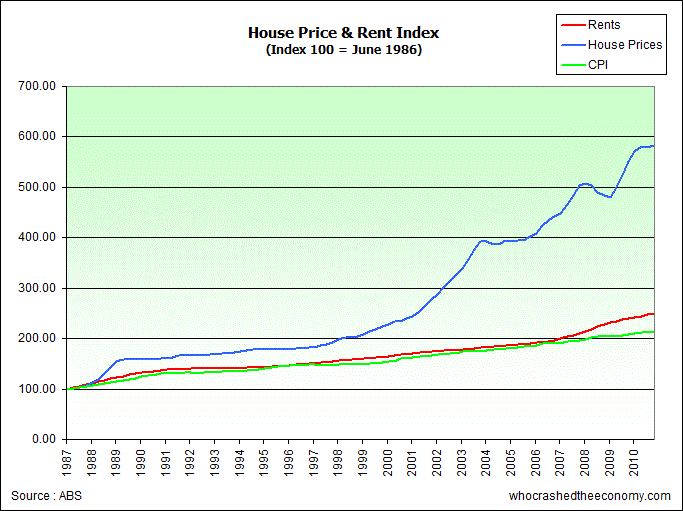Many pundits claim that increasing population increases demand. In technical economic jargon it shifts the curve to the right. But what we rarely see is an exploration of the two types of demand shock and the different potential price impacts.
The first type, as mentioned above, shifts the downward sloping demand curve to the right. This means there are more people with the same willingness to pay.
The second type is a shift of the demand curve up upwards. This represents a willingness to pay more for the same goods from the same number of people.
It’s pretty clear from this distinction which of these factors is in play in Australian housing.
Let’s examine the first case. Consider an auction with 10 cars for sale and 50 bidders willing to pay $1000 for a car. You add another 50 people to the mix each also willing to pay $1000. If I’m not being clear enough, this is analogous to increasing population in the housing context.
When the auction is run with the original 50 bidders each car sells for $1,000. When the auction is run with 100 bidders, the 10 cars still sell for $1,000 each.
This is an extreme scenario but does demonstrate a very real point. Unless the new potential buyers are willing to pay more for the same items as the existing buyers, the price won’t rise. At most, a second price auction (the result of an English open auction with heterogeneous preferences) becomes closer to a first price sealed bid auction by the addition of another bidder willing to bid at a price between the second and first price (read up on some auction theory here).
As I said before, new buyers, even a small cohort of the total market, can influence the price level if they are willing to pay more than the existing buyers, since prices are set at the margins. Imagine our car auction once again, and we give 10 of our original 50 bidders and extra $500 to spend on the car. What is the new result? All cars sell for $1500 each to these 10 bidders. Even though they were just 20% of the original market of buyers, they dragged the price up 50%. In fact even if there were thousands of buyers willing and able to pay $1000 for those 10 cars, the ten people willing to pay $1500 would always win.
Prices are set at the margin by those with the highest willingness to pay.
This example, where the demand curve is shifted vertically to reflect an increased willingness to pay by the same number of buyers, is shown graphically in the right hand side graph above.
But, you say, the key problem here is that supply is being overlooked - in the simplified examples demand curves are horizontal and there is no supply response. But look at the graphs again. Not only is the demand curve a more acceptable shape, but supply does respond in both circumstances. In the first, where the demand profile of buyers shifts horizontally supply does respond enabling prices to remain at their equilibrium level.
However, when the demand curve shifts vertically, it doesn’t matter how much supply responds to price increases, it cannot be a mechanism to bring prices back down (except under extreme assumptions about the shape of demand and supply and the limits of peoples willingness to pay at the top and bottom of the market).
Of course, in the end this analysis is probably unecessary. The value of housing arises from the rents - its ability to generate revenue or provide a service. Since we haven’t seen rents outpace inflation significantly for any extended period in the past two decades, one must be quite certain that the cause of prices being much higher than a rational present value of future cash flows is pure demand side speculation.
Subscribe to:
Post Comments (Atom)


No comments:
Post a Comment